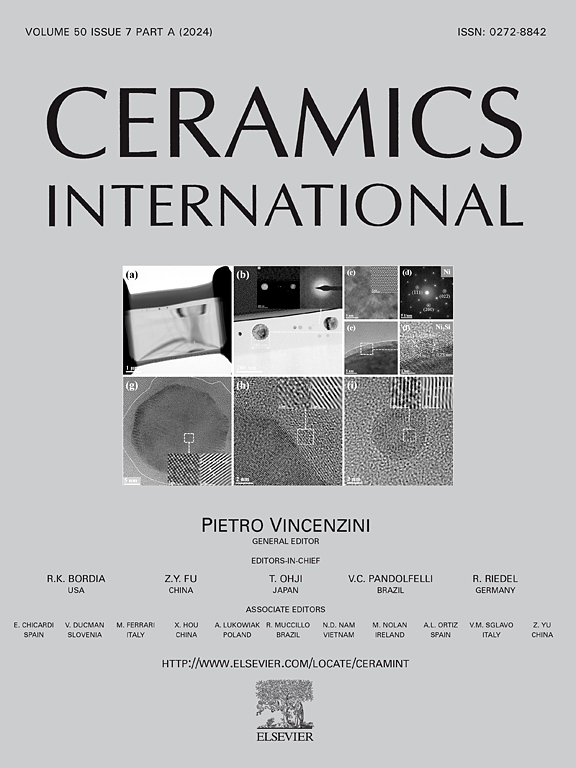Effect of thermal annealing on the structural evolution of thin ceramic YAG: Ce films grown by pulsed laser deposition
IF 5.1
2区 材料科学
Q1 MATERIALS SCIENCE, CERAMICS
引用次数: 0
Abstract
It is well established that the performance of LED and laser devices can be enhanced by optimizing the heat sink. Aluminum oxide (Al2O3) is one of the most effective materials for use as a heat sink. In this study, YAG: Ce3+ thin films were deposited onto sapphire substrates with a (0001) orientation using pulsed laser deposition method. It was observed that the annealing temperature did not significantly affect the thickness of the films, but it did influence their uniformity and structure. As the annealing temperature of the YAG: Ce films increased, crystallite growth was noted. The polydispersity of the grains also increased with higher annealing temperatures, indicating competitive growth phenomena. Raising the annealing temperature to 1400 °C led to the formation of gaps in the film structure due to recrystallization processes. Luminescence measurements revealed that, despite the structural differences among films annealed at various temperatures, their emission spectra remained consistent with the target. This suggests the stability of the energy structure of YAG: Ce and the successful transfer of YAG stoichiometry during the pulsed laser deposition process. As a result, optimal conditions for the thermal annealing of YAG: Ce thin films were identified, leading to high crystalline perfection and the formation of a heteroepitaxial interface with the Al2O3 (0001) substrate. This finding is potentially significant for enhancing the thermal characteristics of composite structures.
求助全文
约1分钟内获得全文
求助全文
来源期刊

Ceramics International
工程技术-材料科学:硅酸盐
CiteScore
9.40
自引率
15.40%
发文量
4558
审稿时长
25 days
期刊介绍:
Ceramics International covers the science of advanced ceramic materials. The journal encourages contributions that demonstrate how an understanding of the basic chemical and physical phenomena may direct materials design and stimulate ideas for new or improved processing techniques, in order to obtain materials with desired structural features and properties.
Ceramics International covers oxide and non-oxide ceramics, functional glasses, glass ceramics, amorphous inorganic non-metallic materials (and their combinations with metal and organic materials), in the form of particulates, dense or porous bodies, thin/thick films and laminated, graded and composite structures. Process related topics such as ceramic-ceramic joints or joining ceramics with dissimilar materials, as well as surface finishing and conditioning are also covered. Besides traditional processing techniques, manufacturing routes of interest include innovative procedures benefiting from externally applied stresses, electromagnetic fields and energetic beams, as well as top-down and self-assembly nanotechnology approaches. In addition, the journal welcomes submissions on bio-inspired and bio-enabled materials designs, experimentally validated multi scale modelling and simulation for materials design, and the use of the most advanced chemical and physical characterization techniques of structure, properties and behaviour.
Technologically relevant low-dimensional systems are a particular focus of Ceramics International. These include 0, 1 and 2-D nanomaterials (also covering CNTs, graphene and related materials, and diamond-like carbons), their nanocomposites, as well as nano-hybrids and hierarchical multifunctional nanostructures that might integrate molecular, biological and electronic components.
 求助内容:
求助内容: 应助结果提醒方式:
应助结果提醒方式:


